Catholic Virtues
 |
 |
 |
 |
 |
 |
 |
True & False Paths to Happiness - XII
Finding the Sacral in the Temporal Sphere
Contemporary relativism and secularism lead to a tendency to be indifferent toward the marvelous and, above all, apathetic before the horrible. The antipode of these errors is the sacral contemplation of earthly life.
Only to contemplate? Yes, because contemplation is not only knowledge, but love.
 One of the most burning and imperative affirmations of our sociability is this need to love and be loved, which is inseparable from the nature of each man.
One of the most burning and imperative affirmations of our sociability is this need to love and be loved, which is inseparable from the nature of each man.
Our love, however, has gradations. It turns itself, with due measure, to things of the mineral kingdom, the vegetable kingdom, and the animal kingdom.
For example, we can love a beautiful crystal that we find on the ground during a walk. More duly we love a plant, such as a rose. The word love takes on greater meaning when its object is an animal, for example, the dog, a faithful companion in good and bad days
But there is only love, properly speaking, when the object is a being of our species. This last love, incomparably greater than the others previously listed, leads us to the idea of the love we owe to the One who is the Absolute Being, the Being par excellence, the Being that contains in itself substantially all perfections.
Thus, sacral contemplation includes the loving admiration of all the beings in the universe, and unfolds in God. However, it is not situated on a specifically religious terrain, although it is from a perspective that is, at depth, religious.
The consecratio mundi - sacralization of the world
Having set out the meaning of the word contemplation, it remains to explain what sacral means.
 The concept of sacralization was introduced by Pius XII in his famous address to the participants in the Second World Congress for the Apostolate of the Laity, on October 5, 1957: “Relations between the Church and the world require the intervention of lay apostles. The consecratio mundi [sacralization of the world] is essentially the work of the laity, of men who are intimately intertwined in economic and social life, who participate in the government and legislative assemblies."
The concept of sacralization was introduced by Pius XII in his famous address to the participants in the Second World Congress for the Apostolate of the Laity, on October 5, 1957: “Relations between the Church and the world require the intervention of lay apostles. The consecratio mundi [sacralization of the world] is essentially the work of the laity, of men who are intimately intertwined in economic and social life, who participate in the government and legislative assemblies."
It is by no means a question of transforming temporal society into a kind of religious order, but of improving and even spiritualizing its cultural aspects, without the latter ceasing to be temporal or earthly.
The 1957 Christmas Radio-message, by the same Pontiff, can be considered a development of what he meant by the sacralization of the world:
"Man, from his first encounter with the universe, was ecstatic over such incomparable beauty and harmony. ... The sky resplendent with light or dotted with stars, the oceans of immense extension and variegated hues, the inaccessible peaks of snow-capped hills, the green forests regurgitating with life, the regular succession of the seasons and the multiform variety of beings drew a cry of admiration from his chest!"
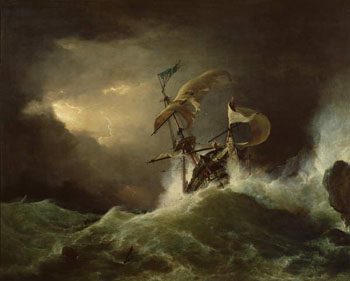 Man sees beauty, commented Pius XII, "even in the elements in fury as an expression of the Creator's power: More powerful than the roar of many waters, more powerful than the mighty waves of the sea, the Lord is powerful on high (Ps 93, 4) and God will thunder with the voice of his excellency (Job 37: 4)". The Pope added that the etymology of cosmos is order, harmony, beauty.
Man sees beauty, commented Pius XII, "even in the elements in fury as an expression of the Creator's power: More powerful than the roar of many waters, more powerful than the mighty waves of the sea, the Lord is powerful on high (Ps 93, 4) and God will thunder with the voice of his excellency (Job 37: 4)". The Pope added that the etymology of cosmos is order, harmony, beauty.
But these splendid truths are rejected by those who fail to establish a "necessary relationship between the eternal and the temporal," segregating God from the world "as two beings too different and distant and, therefore, without reciprocal links."
The Pontiff also spoke about the dignity that belongs to Creation as being a reflection of the infinite and the eternal. "And this is due to the essential order inscribed in all things and to the intimate coherence and harmony whose sonorous echo the world repeats."
The great law of harmony, he said, penetrates the world. "The universe presents itself in this way as an admirable symphony, dictated by the Spirit of God, and whose fundamental chord springs from the fusion of divine perfections: wisdom, love, omnipotence. Domine, Dominus noster, quam admirabile est nomen tuum in universa terra!" (O Lord, our Lord, how wonderful is Thy name in the whole earth! Ps 8.2).
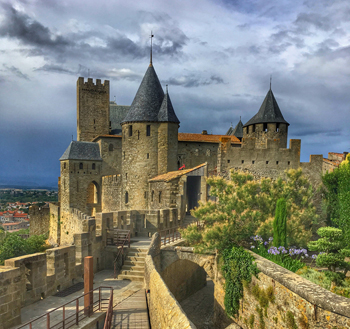 The Pontiff exalted "those who, with the Psalmist, have ears to hear the divine symphony that sounds in the cosmos " and shows how Our Lord Jesus Christ "is the testimony and pledge of the harmony of the world."
The Pontiff exalted "those who, with the Psalmist, have ears to hear the divine symphony that sounds in the cosmos " and shows how Our Lord Jesus Christ "is the testimony and pledge of the harmony of the world."
The work of sacralization, therefore, aims to promote harmony and conforms the temporal sphere with the Spirit of God. And it results from an action within the temporal sphere itself, a task that is primarily the responsibility of the laity.
A historical fact helps us to understand the question: In the Middle Ages, there was the sacred in the ecclesiastical order and the sacral in the temporal order; after that blessed time, the spiritual influx withdrew from civil society, taking refuge mainly in the churches.
Sacred and sacral, differences in hue
The Pontiff's explanation introduces us to another aspect of the theme, which is the difference in hue between two very similar words, but which, for didactic purposes, can be distinguished: sacred and sacral.
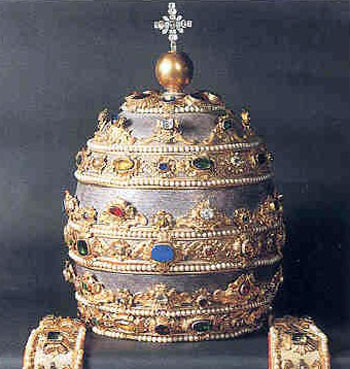
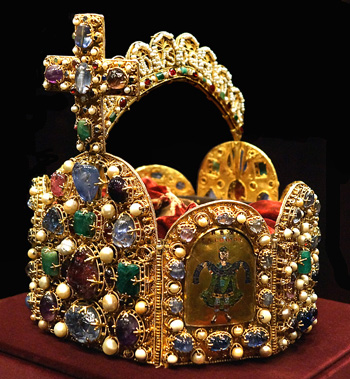 Indeed, to express the actual character of temporal society, it is legitimate to use the word sacral, with subtle and important differences in meaning in relation to the word
sacred. A reliquary, for example, is a sacred object; a safe where the crown jewels are kept (and which, therefore, is not related to worship) can be sacral, although it is not sacred. A mere unworked wooden box is neither sacred nor sacral.
Indeed, to express the actual character of temporal society, it is legitimate to use the word sacral, with subtle and important differences in meaning in relation to the word
sacred. A reliquary, for example, is a sacred object; a safe where the crown jewels are kept (and which, therefore, is not related to worship) can be sacral, although it is not sacred. A mere unworked wooden box is neither sacred nor sacral.
Thus, the spiritual element must be present in both spheres: ecclesiastical and temporal: For the ecclesiastical sphere the adjective is sacred; for the temporal sphere, the term sacral is more appropriate.
Let us look at others examples: The pontifical tiara is a sacred object; Charlemagne's crown, a sacral piece. A church building has something sacred about it; a castle, due to its magnificence and elevation, may deserve to be called sacral, never sacred. A room, an enclosure, an object can be sacral even if they do not have any religious symbol in them if they have great dignity and elevation.
The things of the temporal world that bear within themselves - in any capacity - a certain special resemblance to God are sacred. However, a grain of sand, taken in the rough, is not sacral. It is meant to be stepped on. However, anyone who carefully analyzes a grain of sand realizes that, like all things in the universe, there is a sacral aspect to it. One must look to find it, but, seeking, it is really there. In everything that exists, there is something sacral.
The Koh-i-Noor (Mountain of Light), a remarkable diamond in the British Crown Jewels, can be called sacral because it has a shine, a beauty that easily resembles a spark of the Divine Intelligence! The tower of a medieval castle can be considered sacral for recalling, much better than a simple brilliance, the elevated soul that composed such a work of art.
It could also be said that an event in the temporal or profane sphere, such as the inauguration of a ruler or a military parade that has a religious substrata marked by a great elevation, could have something sacral - how rarely we see it today! - but it would be inappropriate to use the adjective sacred for this event.
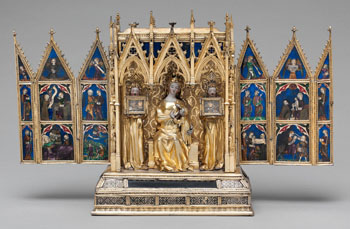
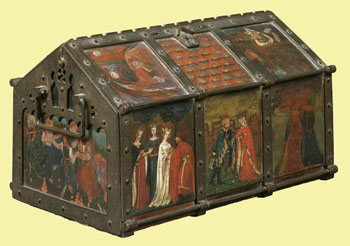 Sacred, therefore, directly concerns the religious sphere; and sacral, in the sense explained here, is related to the temporal or secular sphere.
Sacred, therefore, directly concerns the religious sphere; and sacral, in the sense explained here, is related to the temporal or secular sphere.
Sacred belongs to the Church; sacral is the way in which temporal society is sacred. It is sacredness applied to the temporal society; it is, so to speak, a dilution of the sacred that belongs to temporal society.
Certainly the Church has the means necessary to promote the salvation of souls. But civil society and the State have instrumental means for the same purpose, that is, means that, moved by a higher agent, produce effects superior to themselves.
The end of society and of the State is the virtuous life in common. Now, the virtues that man is called to practice are the Catholic virtues, and of these the first is the love of God. Society and the State, therefore, both have a sacral end. (Cf St. Thomas, De Regimine Principum, 1, 14-15)
Therefore, sacral describes that which presents, in the end, an analogy with God Our Lord. Sacral culture is a culture that makes man find these analogies in everything. He does not make them, but he finds them because they exist. It is not a matter of inventing, but of discovering, which is something quite different.
That being said, the expression sacral contemplation is properly defined: It is to look, with religious admiration, at the temporal world.
Continued
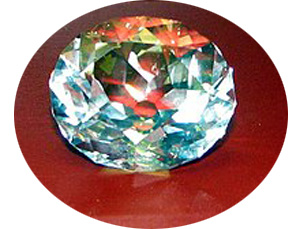

Only to contemplate? Yes, because contemplation is not only knowledge, but love.

We can have a strong affection for a dog, but it is man that deserves our love, properly speaking
Our love, however, has gradations. It turns itself, with due measure, to things of the mineral kingdom, the vegetable kingdom, and the animal kingdom.
For example, we can love a beautiful crystal that we find on the ground during a walk. More duly we love a plant, such as a rose. The word love takes on greater meaning when its object is an animal, for example, the dog, a faithful companion in good and bad days
But there is only love, properly speaking, when the object is a being of our species. This last love, incomparably greater than the others previously listed, leads us to the idea of the love we owe to the One who is the Absolute Being, the Being par excellence, the Being that contains in itself substantially all perfections.
Thus, sacral contemplation includes the loving admiration of all the beings in the universe, and unfolds in God. However, it is not situated on a specifically religious terrain, although it is from a perspective that is, at depth, religious.
The consecratio mundi - sacralization of the world
Having set out the meaning of the word contemplation, it remains to explain what sacral means.

‘Man, from his first encounter with the universe, was ecstatic over its incomparable beauty & harmony’
It is by no means a question of transforming temporal society into a kind of religious order, but of improving and even spiritualizing its cultural aspects, without the latter ceasing to be temporal or earthly.
The 1957 Christmas Radio-message, by the same Pontiff, can be considered a development of what he meant by the sacralization of the world:
"Man, from his first encounter with the universe, was ecstatic over such incomparable beauty and harmony. ... The sky resplendent with light or dotted with stars, the oceans of immense extension and variegated hues, the inaccessible peaks of snow-capped hills, the green forests regurgitating with life, the regular succession of the seasons and the multiform variety of beings drew a cry of admiration from his chest!"

‘Beauty is found even in the fury of the elements as an expression of the Creator's power’
But these splendid truths are rejected by those who fail to establish a "necessary relationship between the eternal and the temporal," segregating God from the world "as two beings too different and distant and, therefore, without reciprocal links."
The Pontiff also spoke about the dignity that belongs to Creation as being a reflection of the infinite and the eternal. "And this is due to the essential order inscribed in all things and to the intimate coherence and harmony whose sonorous echo the world repeats."
The great law of harmony, he said, penetrates the world. "The universe presents itself in this way as an admirable symphony, dictated by the Spirit of God, and whose fundamental chord springs from the fusion of divine perfections: wisdom, love, omnipotence. Domine, Dominus noster, quam admirabile est nomen tuum in universa terra!" (O Lord, our Lord, how wonderful is Thy name in the whole earth! Ps 8.2).

The French medieval city of Carcassonne reflects a sacrality in the temporal sphere
The work of sacralization, therefore, aims to promote harmony and conforms the temporal sphere with the Spirit of God. And it results from an action within the temporal sphere itself, a task that is primarily the responsibility of the laity.
A historical fact helps us to understand the question: In the Middle Ages, there was the sacred in the ecclesiastical order and the sacral in the temporal order; after that blessed time, the spiritual influx withdrew from civil society, taking refuge mainly in the churches.
Sacred and sacral, differences in hue
The Pontiff's explanation introduces us to another aspect of the theme, which is the difference in hue between two very similar words, but which, for didactic purposes, can be distinguished: sacred and sacral.

The papal tiara is a sacred object; Charlemagne's crown is a sacral piece

Thus, the spiritual element must be present in both spheres: ecclesiastical and temporal: For the ecclesiastical sphere the adjective is sacred; for the temporal sphere, the term sacral is more appropriate.
Let us look at others examples: The pontifical tiara is a sacred object; Charlemagne's crown, a sacral piece. A church building has something sacred about it; a castle, due to its magnificence and elevation, may deserve to be called sacral, never sacred. A room, an enclosure, an object can be sacral even if they do not have any religious symbol in them if they have great dignity and elevation.
The things of the temporal world that bear within themselves - in any capacity - a certain special resemblance to God are sacred. However, a grain of sand, taken in the rough, is not sacral. It is meant to be stepped on. However, anyone who carefully analyzes a grain of sand realizes that, like all things in the universe, there is a sacral aspect to it. One must look to find it, but, seeking, it is really there. In everything that exists, there is something sacral.
The Koh-i-Noor (Mountain of Light), a remarkable diamond in the British Crown Jewels, can be called sacral because it has a shine, a beauty that easily resembles a spark of the Divine Intelligence! The tower of a medieval castle can be considered sacral for recalling, much better than a simple brilliance, the elevated soul that composed such a work of art.
It could also be said that an event in the temporal or profane sphere, such as the inauguration of a ruler or a military parade that has a religious substrata marked by a great elevation, could have something sacral - how rarely we see it today! - but it would be inappropriate to use the adjective sacred for this event.

The reliquary of St. Jean de Touyl is sacred, the metal jewel casket below has a sacral aspect

Sacred belongs to the Church; sacral is the way in which temporal society is sacred. It is sacredness applied to the temporal society; it is, so to speak, a dilution of the sacred that belongs to temporal society.
Certainly the Church has the means necessary to promote the salvation of souls. But civil society and the State have instrumental means for the same purpose, that is, means that, moved by a higher agent, produce effects superior to themselves.
The end of society and of the State is the virtuous life in common. Now, the virtues that man is called to practice are the Catholic virtues, and of these the first is the love of God. Society and the State, therefore, both have a sacral end. (Cf St. Thomas, De Regimine Principum, 1, 14-15)
Therefore, sacral describes that which presents, in the end, an analogy with God Our Lord. Sacral culture is a culture that makes man find these analogies in everything. He does not make them, but he finds them because they exist. It is not a matter of inventing, but of discovering, which is something quite different.
That being said, the expression sacral contemplation is properly defined: It is to look, with religious admiration, at the temporal world.
Continued

The Koh-i-Noor has a sacral aspect that reflects
the brilliance of the Divine Intelligence

Posted July 13, 2020





